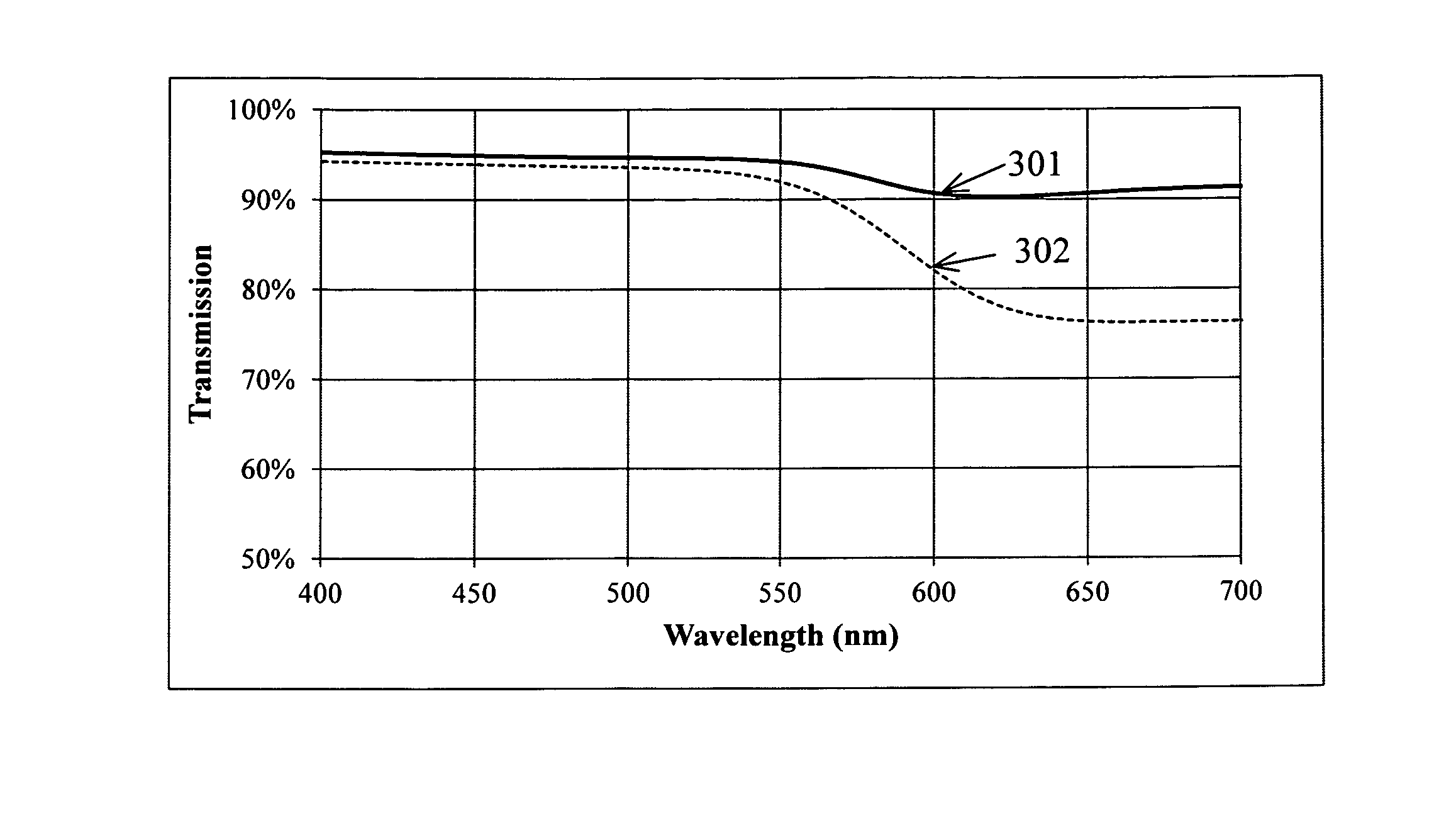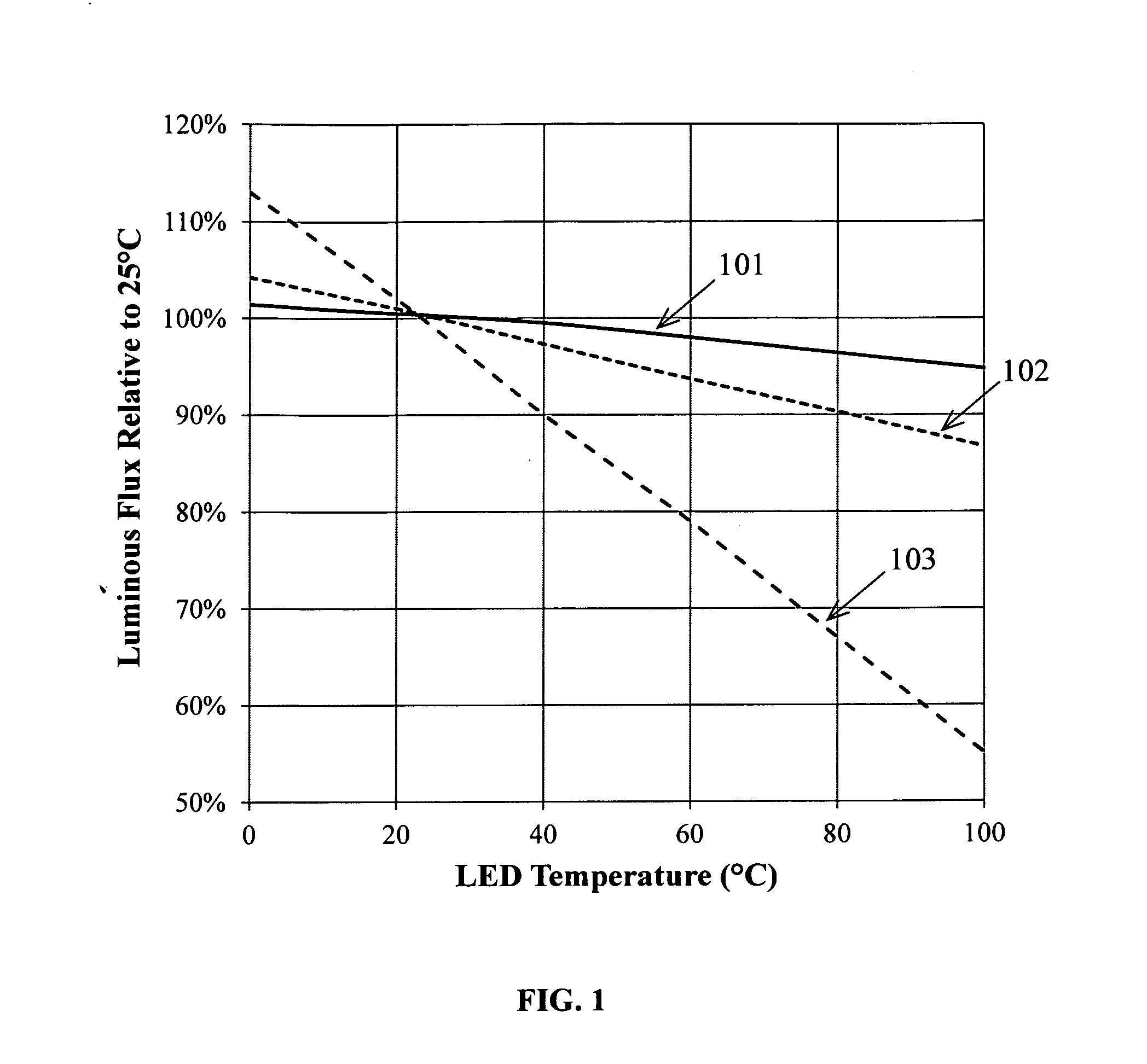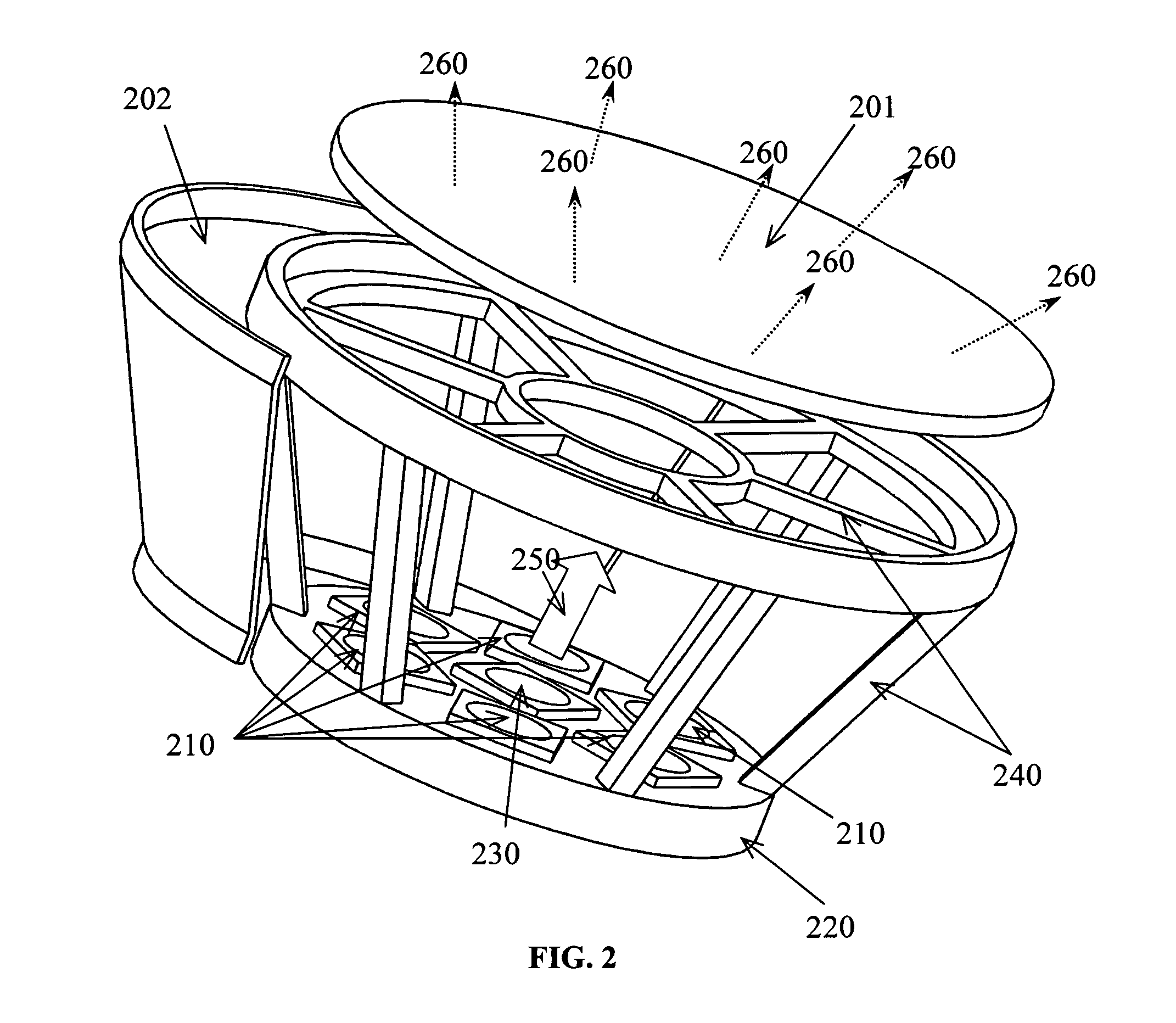Thermochromic Optical Elements
- Summary
- Abstract
- Description
- Claims
- Application Information
AI Technical Summary
Benefits of technology
Problems solved by technology
Method used
Image
Examples
Example
DETAILED DESCRIPTION OF THE DRAWINGS
[0049]FIG. 1 illustrates the typical luminous flux behavior of various LEDs as a function of their operating temperature. Blue LEDs 101 show the least decrease in luminous output as a function of operating temperature. Common phosphor converted LEDs utilize a blue LED to excite one or more phosphors and have a luminous flux behavior with respect to operating temperature that closely matches that of blue LEDs 101.
[0050]Green LEDs 102 show a slightly greater decrease in luminous flux with respect to operating temperature. This is in part due to the fact that the peak emission wavelength of green LEDs is closer to the wavelength of maximum eye sensitivity. In this region the change in eye sensitivity with respect to wavelength is less pronounced and the phenomenon is does not compensate for decreased optical radiance as well as for blue LEDs.
[0051]As previously noted AlInGaP LEDs show a very pronounced decrease in luminous flux with respect to operat...
PUM
 Login to View More
Login to View More Abstract
Description
Claims
Application Information
 Login to View More
Login to View More - R&D
- Intellectual Property
- Life Sciences
- Materials
- Tech Scout
- Unparalleled Data Quality
- Higher Quality Content
- 60% Fewer Hallucinations
Browse by: Latest US Patents, China's latest patents, Technical Efficacy Thesaurus, Application Domain, Technology Topic, Popular Technical Reports.
© 2025 PatSnap. All rights reserved.Legal|Privacy policy|Modern Slavery Act Transparency Statement|Sitemap|About US| Contact US: help@patsnap.com



